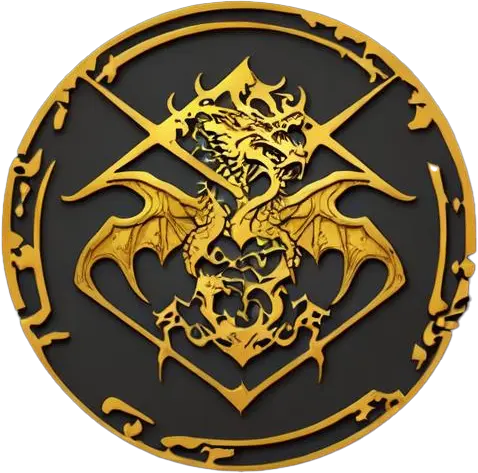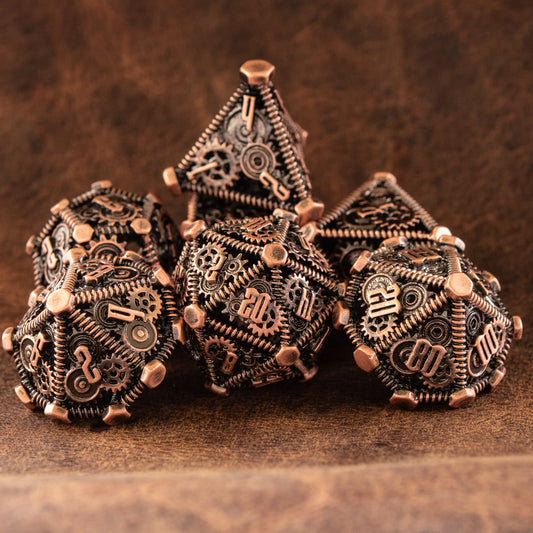
How Big Are DND Dice: A Comprehensive Guide
Share
How Big Are DND Dice: A Comprehensive Guide
Introduction
Dungeons & Dragons (DND) is a highly popular tabletop role-playing game that has captivated millions of players worldwide. One of the defining elements of the game is the set of polyhedral dice used to determine various outcomes. Understanding the sizes of these dice is crucial for both new and experienced players. This guide will delve into the dimensions of DND dice, discussing their sizes and the significance of these unique gaming tools.
What Are DND Dice?
DND dice are specialized polyhedral dice used in Dungeons & Dragons gameplay. Each type of die serves a specific purpose, from determining the success of an attack to calculating damage or other outcomes. The standard set includes seven different dice: D4, D6, D8, D10, D12, D20, and D100. These dice are integral to the mechanics of DND, adding an element of chance and excitement to the game.
Types of DND Dice
D10 (Decahedron)
The D10 dice, or decahedron, is a ten-sided die commonly used to determine percentages or outcomes on a scale of 1 to 10. It often comes in pairs to form a percentile dice (D100), representing numbers from 00 to 90 in increments of 10. The D10 typically measures around 16 mm.
D100 (Zocchihedron)
The D100, also known as the Zocchihedron, is a unique die with 100 faces. It is used for percentile rolls and can provide results from 1 to 100. This die is larger than most, usually measuring around 34 mm, making it a standout piece in any dice collection.
D12 (Dodecahedron)
The D12 dice, or dodecahedron, has twelve faces and is often used for determining damage for certain weapons or spells. It has a standard size of approximately 18 mm. Its unique shape and usage make it a favorite among many players.
D20 (Icosahedron)
The D20, or icosahedron, is perhaps the most iconic of all DND dice. With twenty faces, it is used for most critical rolls in the game, such as attack rolls, skill checks, and saving throws. The standard size for a D20 is about 22 mm, providing a good balance between readability and ease of rolling.
D4 (Tetrahedron)
The D4, or tetrahedron, is a four-sided die used for smaller damage rolls or determining outcomes with fewer variables. It typically measures around 12 mm and has a distinctive pyramid shape that makes it easily recognizable.
D6 (Cube)
The D6, or cube, is a six-sided die that is widely used in many tabletop games, including DND. It is often used for damage rolls and other basic outcomes. The standard size for a D6 is 16 mm, making it a versatile and commonly used die.
D8 (Octahedron)
The D8, or octahedron, has eight faces and is used for various damage rolls and other specific outcomes. It typically measures around 16 mm, similar to the D6, and is an essential part of any DND dice set.
Standard Sizes of DND Dice
Common Sizes
The standard size for DND dice is generally around 16 mm, but this can vary slightly depending on the type of die. Here is a quick reference for common sizes:
- D4: 12 mm
- D6: 16 mm
- D8: 16 mm
- D10: 16 mm
- D12: 18 mm
- D20: 22 mm
- D100: 34 mm
Material Impact
The material of the dice can significantly impact their size and weight. Plastic dice are the most common and are generally lightweight, making them easy to roll and carry. Metal dice, on the other hand, are heavier and can provide a more satisfying roll but may require a dice tray to prevent damage to surfaces. Resin dice offer a balance between the two, often featuring intricate designs and a moderate weight.
Detailed Size Guide
D10 Size
The D10 dice typically measures around 16 mm from face to face. This size allows for easy readability and handling during gameplay.
D100 Size
The D100, or Zocchihedron, is substantially larger, usually around 34 mm. Its size makes it a centerpiece in any dice collection and ensures clear visibility of the rolled number.
D12 Size
The D12 dice measures approximately 18 mm. Its slightly larger size compared to other dice makes it easier to read and handle.
D20 Size
The D20 dice, essential for many critical rolls, typically measures around 22 mm. This size strikes a balance between readability and ease of rolling.
D4 Size
The D4 dice, with its unique pyramid shape, measures around 12 mm. Its small size can make it a bit tricky to roll, but it is easily recognizable.
D6 Size
The D6 dice, a staple in many games, measures around 16 mm. Its cube shape and moderate size make it versatile and easy to use.
D8 Size
The D8 dice measures around 16 mm, similar to the D6. Its octahedral shape is distinctive and functional for various gameplay scenarios.
Understanding the sizes and types of DND dice is crucial for enhancing your gameplay experience. Whether you're a beginner or an experienced player, knowing the dimensions and uses of each die can help you make informed decisions and fully enjoy the world of Dungeons & Dragons.
Additional Considerations
Aesthetic Appeal
The aesthetic appeal of DND dice is a significant factor for many players. Dice come in a variety of designs, colors, and finishes, which can enhance the visual enjoyment of the game. Larger dice often feature more intricate designs and are easier to customize with unique patterns and colors. Metal and resin dice, in particular, can offer stunning visual effects, such as shimmering inclusions or metallic finishes that catch the light beautifully. For players who take pride in their dice collections, investing in aesthetically pleasing dice can add an extra layer of enjoyment to the game.
Portability
Portability is another important consideration when choosing dice sizes. Smaller dice sets are easier to carry around, making them ideal for players who frequently travel to different game sessions. Mini dice sets, which can be as small as 10 mm, are incredibly portable and can fit into compact dice bags or cases. On the other hand, larger dice, while visually impressive, can be bulkier and may require more space. Players need to balance their preference for dice size with their need for portability, especially if they plan to bring their dice to various locations.
Choosing the Right Dice Size
For Beginners
For beginners, standard-sized dice (around 16 mm) are usually the best choice. These dice offer a good balance between readability and ease of handling. They are also widely available and come in a variety of materials and designs, making it easy for new players to find a set that suits their style. Standard-sized dice are also the most commonly used in DND gameplay, ensuring that beginners can easily follow along with the game mechanics.
For Experienced Players
Experienced players often have specific preferences based on their gameplay style and personal taste. Some may prefer larger dice for their visual impact and readability, while others might opt for smaller dice for ease of rolling multiple dice at once. Experienced players might also enjoy experimenting with different materials, such as metal or resin, to enhance their gaming experience. Ultimately, the choice of dice size for experienced players comes down to personal preference and the specific needs of their gameplay.
For Players with Visual Impairments
Players with visual impairments should consider dice with larger numbers and high-contrast colors to improve readability. Larger dice, such as those in the 22 mm range, can be easier to read and handle. Some manufacturers also produce dice specifically designed for visually impaired players, featuring bold, easy-to-read numbers and high-contrast color schemes. These specialized dice can make the game more accessible and enjoyable for players with visual impairments.
Impact of Dice Size on Gameplay
Readability
The size of the dice can significantly impact readability during gameplay. Larger dice generally have bigger numbers, making them easier to read, especially in low-light conditions or from a distance. This can be particularly beneficial during intense game sessions where quick readability is crucial. Conversely, smaller dice may have smaller numbers, which can be harder to read, potentially slowing down the game as players take extra time to verify their rolls.
Roll Stability
The size and weight of dice also affect their roll stability. Heavier dice, such as those made from metal, tend to have a more stable roll and are less likely to be knocked off course by minor disturbances. This can lead to more consistent and fair outcomes. However, heavier dice may require a dice tray to prevent damage to surfaces. Lighter dice, such as plastic or mini dice, are easier to roll but can be more susceptible to being accidentally moved or knocked over. Players should consider their preferred balance of stability and ease of rolling when selecting their dice.
Conclusion
Understanding the sizes and types of DND dice is crucial for enhancing your gameplay experience. Whether you're a beginner or an experienced player, knowing the dimensions and uses of each die can help you make informed decisions and fully enjoy the world of Dungeons & Dragons. Consider the aesthetic appeal, portability, and specific needs of your gameplay when choosing your dice. Remember, the right set of dice can make a significant difference in your gaming experience.
Explore different dice options, experiment with various sizes and materials, and find the perfect set that complements your style and gameplay. Dive deeper into the enchanting world of Dungeons & Dragons and let your dice roll bring your adventures to life!
For more insights and tips on DND gameplay, be sure to check out our other articles and resources. Happy rolling!


